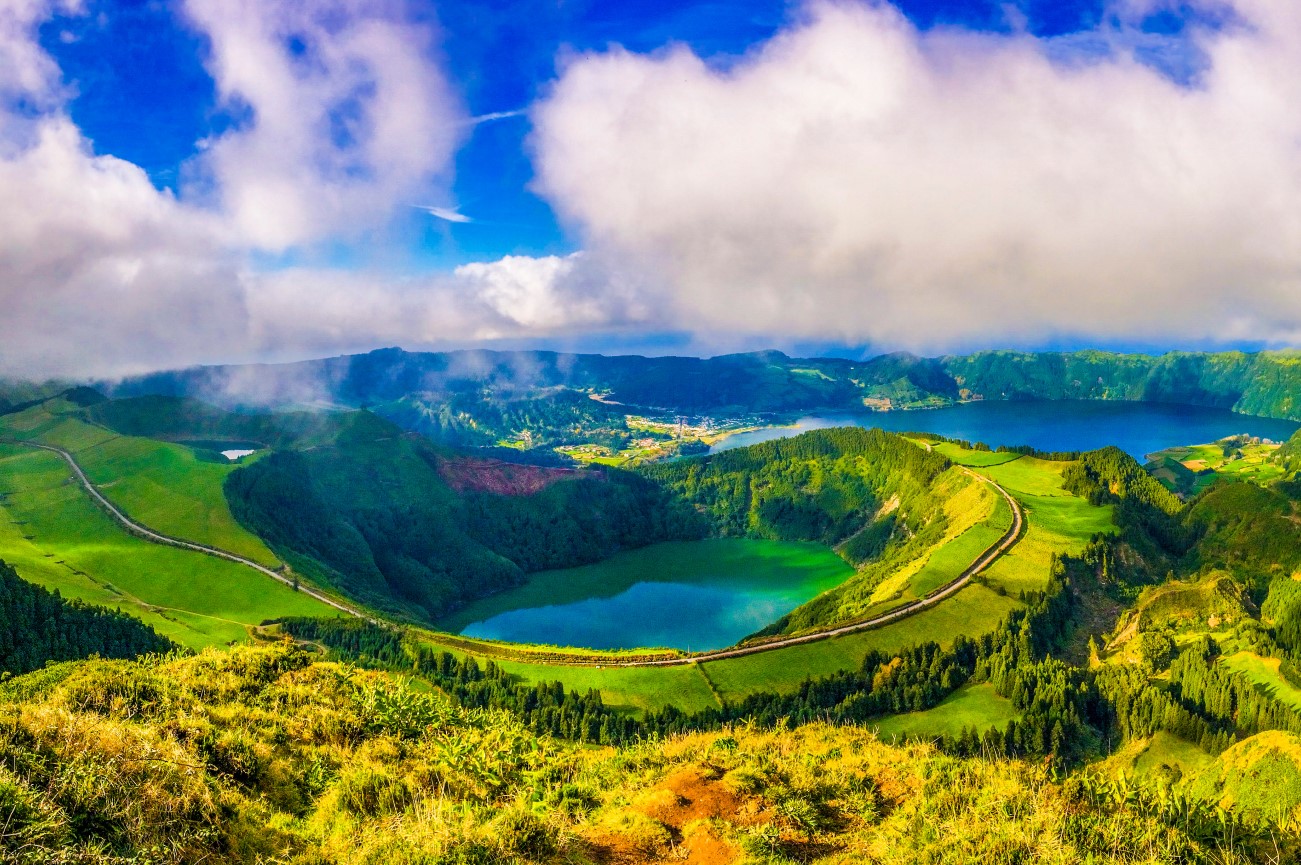🏞 The Azores Islands
Top ten places to travel

All the nine islands of the Azores Archipelago are volcanic origin and are located in the North Atlantic, scattered along a 600 km stretch of ocean from Santa Maria to Corvo, approximately between 37° and 40° north latitude and 25° and 31° west longitude. In the realm of legend, some associate the Azores to the Atlantis, the mythical island kingdom quoted by Plato. As for history, references to nine islands in the Atlantic Ocean located approximately in the position of the Azores can be found in books and maps since the 14th century. However, it was with the Portuguese Maritime Discoveries, led by Prince Infante D. Henrique, that the Azores were definitely registered in the map of Europe. It is unknown whether the first navigator to reach the archipelago was Diogo de Silves in 1427 or Gonçalo Velho Cabral in 1431. The origin of the name Azores is also debatable as there are various theories. The most common associates the designation of the common buzzards found on the islands which were mistaken as being another bird of prey: the northern goshawk (açor). What is now certain is that it was Prince Infante D. Henrique who incited the settlement of the islands. First, animals were sent, between 1431 and 1432 , and later settlers started to arrive from 1439.
Learn more on VisitAzores